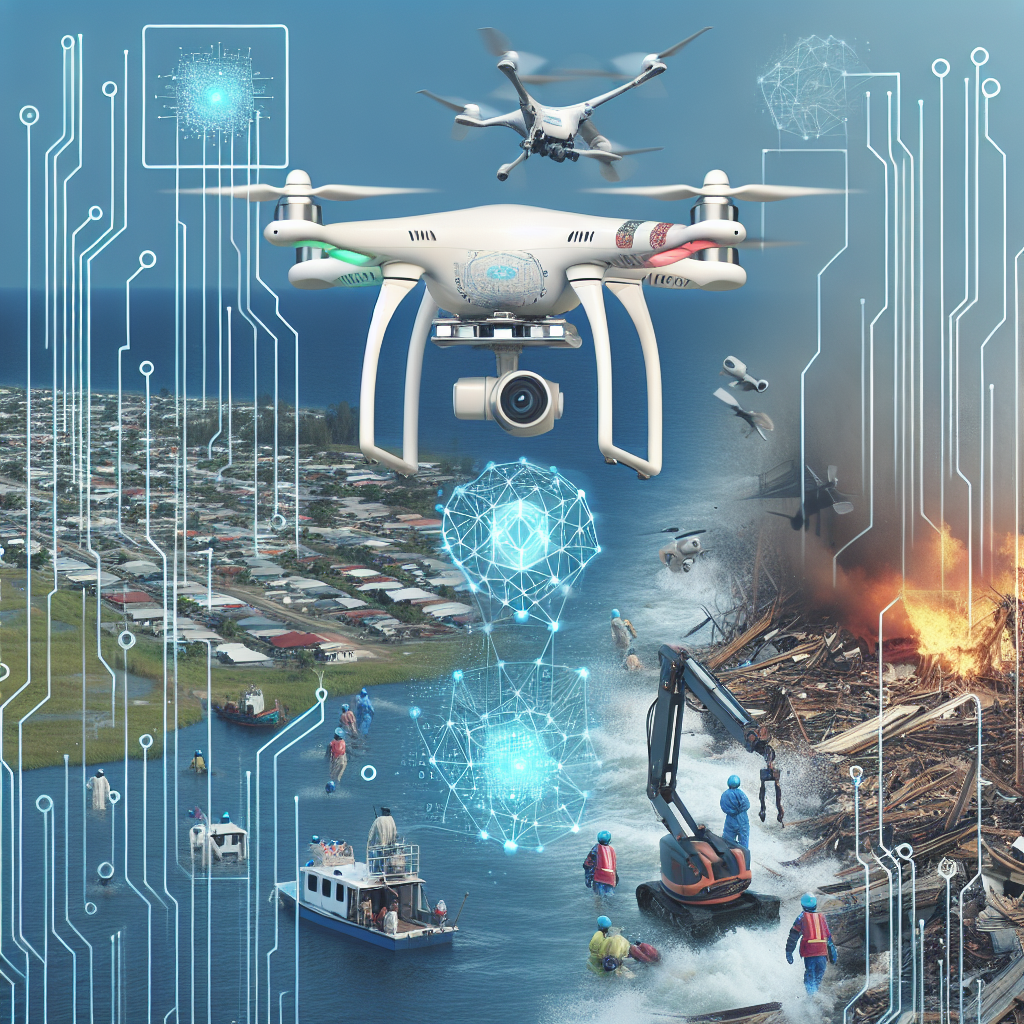The Role of AI in Disaster Management and Response
In recent years, the world has seen an increase in the frequency and severity of natural disasters such as hurricanes, earthquakes, and wildfires. These disasters can have devastating effects on communities, causing loss of life, property damage, and disruption to critical infrastructure. In the face of such challenges, the use of artificial intelligence (AI) is becoming increasingly important in disaster management and response efforts.
AI technology can play a crucial role in disaster management and response by providing real-time data analysis, predictive modeling, and decision-making support. By harnessing the power of AI, emergency responders can better prepare for, respond to, and recover from disasters, ultimately saving lives and reducing the impact of these events on affected communities.
Real-time Data Analysis
One of the key ways in which AI is being used in disaster management and response is through real-time data analysis. AI algorithms can process large volumes of data from various sources, such as satellite imagery, social media posts, and sensor networks, to provide emergency responders with up-to-date information on the unfolding situation.
For example, during a wildfire, AI can analyze satellite images to track the spread of the fire, identify areas at risk, and predict its future trajectory. This information can help firefighters make informed decisions about where to deploy resources and evacuate residents in harm’s way.
Predictive Modeling
Another important application of AI in disaster management is predictive modeling. By analyzing historical data and using machine learning algorithms, AI can forecast the likelihood and impact of future disasters, such as floods or earthquakes. This information can help emergency planners develop proactive strategies to mitigate risks and protect vulnerable populations.
For instance, AI can analyze past flood data to identify areas prone to flooding and predict when and where future floods are likely to occur. This predictive modeling can inform decisions about where to build flood defenses, allocate resources, and evacuate residents in high-risk areas.
Decision-making Support
In addition to real-time data analysis and predictive modeling, AI can also provide decision-making support to emergency responders during a disaster. By analyzing complex data sets and running simulations, AI can help decision-makers identify the most effective strategies for managing a crisis and allocating resources.
For example, AI-powered decision support systems can recommend optimal evacuation routes, prioritize rescue operations, and coordinate the response efforts of multiple agencies. By streamlining decision-making processes and providing actionable insights, AI can help emergency responders make faster, more informed decisions in high-pressure situations.
Challenges and Limitations
While AI has the potential to revolutionize disaster management and response efforts, there are several challenges and limitations that must be addressed. One of the main challenges is the reliability and accuracy of AI algorithms, which can be affected by biases in the data, limitations of the technology, and unforeseen complexities in the disaster scenario.
Another challenge is the ethical implications of using AI in disaster response, such as concerns about privacy, data security, and the potential for algorithmic bias. Emergency responders must carefully consider these ethical issues and ensure that AI technologies are used in a responsible and transparent manner.
Furthermore, there are technical challenges associated with integrating AI into existing disaster management systems and ensuring interoperability with other technologies and data sources. Emergency responders must invest in training and capacity-building to effectively deploy and utilize AI tools in disaster response efforts.
FAQs
Q: How can AI help in early warning systems for natural disasters?
A: AI can analyze data from various sources, such as weather sensors, satellite imagery, and social media, to detect early warning signs of natural disasters and provide timely alerts to at-risk populations.
Q: What role does AI play in post-disaster recovery efforts?
A: AI can help assess damage, prioritize recovery efforts, and optimize resource allocation in the aftermath of a disaster. By analyzing data on infrastructure damage and population displacement, AI can support recovery planning and reconstruction efforts.
Q: How can AI be used to improve emergency communication and coordination?
A: AI-powered communication platforms can streamline information sharing, facilitate real-time collaboration between agencies, and provide situational awareness to emergency responders. AI can help coordinate the response efforts of multiple organizations and ensure a more efficient and effective response to disasters.
Q: What are the potential benefits of using AI in disaster management and response?
A: Some potential benefits of using AI in disaster management and response include faster response times, more accurate predictions, improved decision-making, and enhanced coordination between emergency responders. By harnessing the power of AI, we can better prepare for, respond to, and recover from disasters, ultimately saving lives and reducing the impact on affected communities.
In conclusion, the role of AI in disaster management and response is rapidly evolving, with the potential to transform how we prepare for and respond to natural disasters. By harnessing the power of AI technology, emergency responders can leverage real-time data analysis, predictive modeling, and decision-making support to improve their response efforts and ultimately save lives. However, there are challenges and limitations that must be addressed, including concerns about reliability, accuracy, ethics, and interoperability. By overcoming these challenges and investing in AI technologies, we can build more resilient communities and better protect against the growing threats of natural disasters.

